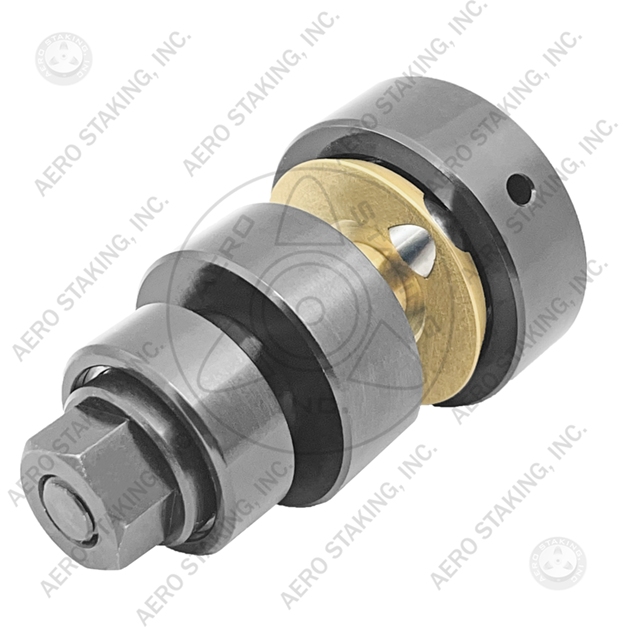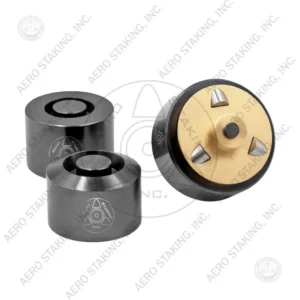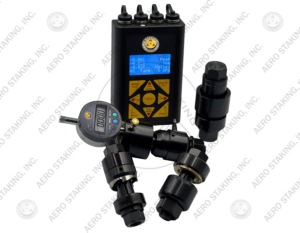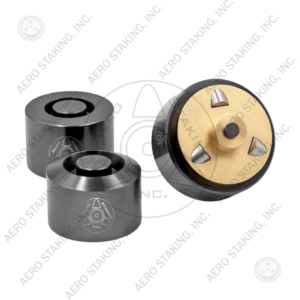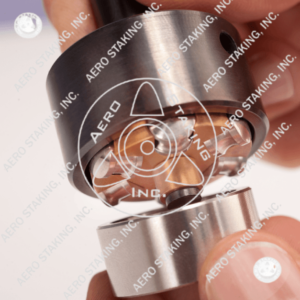Aerospatial bearing swaging is a delicate process that demands precision to ensure bearings remain securely fastened while maintaining structural integrity. Even minor mistakes can lead to serious consequences such as bearing damage, bearing misalignment, or premature failures. Anvil staking can create excessive stress on the housing, making it less ideal for aerospace applications. Understanding bearing assembly technology helps engineers create more durable and high-performance bearing fits. Given that aerospace components must withstand extreme conditions, ensuring a flawless aerospatial bearing swaging process is crucial for long-term reliability.
In this guide, we’ll explore common aerospatial bearing swaging challenges, their impact, and the best methods to ensure a secure and durable bearing installation without risking damage to critical and expensive components like housing.
Common Causes of Bearing Damage During Swaging
One of the greatest risks in aerospatial bearing swaging is applying excessive force, which can lead to irreversible damage. Bearing staking tools are sometimes considered, but swaging remains the preferred method for preserving the housing. Understanding how and why these issues occur is the first step in preventing them.
The Consequences of Excessive Pressure
Applying too much pressure during aerospatial bearing swaging can result in:
- Material deformation – The bearing or housing may warp, affecting performance.
- Structural weakening – Excessive force can introduce microfractures in the surrounding material.
- Premature bearing failure – Unnecessary stress can cause bearing misalignment and excessive wear.
Using a Drill Press Tri Roller Swaging Tool ensures that force is applied evenly, preventing unnecessary strain on critical components.
Bearing Misalignment: A Silent Threat to Performance
Misalignment is a major issue that occurs when the bearing installation process is not done properly. Even a slight deviation can create uneven stress, leading to friction, overheating, and eventual failure.
How to Prevent Misalignment
- Use a precision Bearing Install Tool to ensure accurate alignment. nt. The use of bearing installation machines ensures consistency in aerospace manufacturing.
- Verify placement with a Bearing Testing Tool to detect any deviations before operation.
- Perform a Proof Load Test to confirm that the bearing can handle expected operational stresses.
By focusing on these steps, engineers can prevent costly bearing failure prevention before it happens.
The Pitfalls of Improper Swaging
A less visible but equally important issue is improper swaging, which can compromise the security of the bearing installation. If done incorrectly, it may lead to loose fits, structural weaknesses, or excessive friction.
Signs of Improper Swaging
- The bearing feels either too tight or too loose after installation.
- The swaged area shows visible deformations or cracks.
- The bearing experiences restricted movement or excessive resistance.
Proper use of the Portable Tri Roller Swaging Tool ensures a uniform, secure fit, while post-installation Bearing Testing can catch issues before they escalate.
Best Practices for a Secure Bearing Installation
Achieving a flawless bearing installation requires attention to detail and the right tools. Specialized bearing fitting tools help maintain correct alignment and prevent unnecessary stress on components. Follow these essential steps to ensure accuracy and durability in aerospatial bearing swaging.
Step-by-Step Guide to Bearing Swaging
- Prepare the Surface – Ensure the bearing housing is clean and free of contaminants.
- Align the Bearing – Use a Bearing Install Tool for precise positioning.
- Select the Right Swaging Tool – A Portable Tri Roller Swaging Tool is designed specifically for aerospace applications.
- Apply Even Pressure – Avoid excessive force by using precision-controlled tools.
- Conduct Post-Installation Testing – A Bearing Testing Tool helps verify structural integrity and alignment.
By following these steps, technicians can ensure a strong and lasting bearing fit, reducing the risk of failures and costly repairs. Choosing the right bearing swaging equipment is crucial to maintaining precision in aerospace applications.
The Importance of Post-Swaging Testing
Even with precise tools, post-installation testing is vital to confirm the effectiveness of the aerospatial bearing swaging process. A Proof Load Test is a key practice in aerospace applications, helping identify weaknesses before they cause operational issues. Advances in aerospace precision tools continue to improve the reliability of swaging processes.
Why Proof Load Testing Matters
This test helps detect:
- Insufficient swaging force, which can cause loosening over time.
- Irregularities in the bearing cutter, lead to material damage.
- Weak load-bearing capacity, which could compromise performance in critical conditions.
Regular bearing testing methods ensure reliability, reducing downtime and unexpected failures.
Understanding the Difference Between Swaging and Staking
While staking and swaging are both used in securing bearings, they operate differently:
- Staking applies force to the housing, which can lead to fractures and permanent damage to this expensive component.
- Swaging, on the other hand, cuts a part of the bearing itself—the cheaper, replaceable component—while preserving the housing’s integrity.
Since aerospace parts are costly, swaging is the preferred method because it maintains the structural stability of the housing, avoiding unnecessary replacements and repairs.
Troubleshooting Common Bearing Swaging Challenges
Even with the best preparation, challenges may arise. Here’s how to resolve the most common problems encountered in aerospatial bearing swaging.
Loose Bearing After Swaging
Possible Cause: Insufficient swaging force or incorrect technique.
Solution: Use a calibrated Portable Tri Roller Swaging Tool and perform a Proof Load Test to ensure proper fit.
Misaligned Bearing
Possible Cause: Poor initial alignment or uneven force application.
Solution: Utilize a precision Bearing Install Tool and verify alignment with a Bearing Testing Tool.
Cracks or Deformation Around the Bearing
Possible Cause: Excessive force during aerospatial bearing swaging.
Solution: Reduce pressure and use a controlled Portable Tri Roller Swaging Tool.
Get Expert Support for Your Aerospace Bearing Swaging Needs
Avoiding aerospatial bearing swaging challenges requires expertise, precision tools, and rigorous testing. At Aerostaking, we provide high-quality Bearing Swaging Equipment designed for aerospace applications.
Need guidance on bearing installation, bearing removal, or proof load testing? Are you looking for a precision Tri Roller Swaging Tool to enhance accuracy?
Contact us today to consult with our experts and ensure flawless performance in your aerospatial bearing swaging applications!


